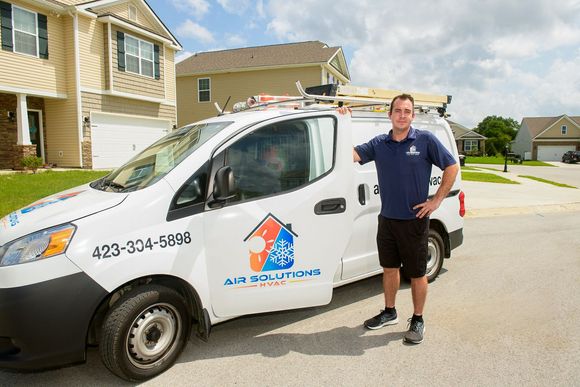Air Solutions HVAC - Heating & Cooling Experts
HVAC Company in Chattanooga, Tennessee
Call us (423) 304-5898


Call
(423) 304-5898 for
Reliable HVAC Service
Stay Comfortable Year-Round with Chattanooga’s Trusted HVAC Experts
Your Heating & Cooling System Deserves the Best
– And So Do You!
There’s nothing worse than a broken air conditioning system on a hot Tennessee day or a faulty heater in the middle of winter. That’s where Air Solutions Heating & Cooling comes in. We’re your local HVAC company in Chattanooga, here to make sure your home stays comfortable no matter the season.
Need fast AC repair in Chattanooga?
Call us today!
Reliable HVAC Services in Chattanooga, TN
AC Repair & Air Conditioning Services
Is your air conditioning unit blowing warm air or making strange noises? We get it—Tennessee summers are no joke. Our team provides fast and affordable AC repair in Chattanooga, so you don’t have to suffer through the heat.
Heating Repair & Installation
Chattanooga winters can get chilly, and a failing heating system is the last thing you need. Whether your furnace needs a quick fix or you’re ready for an energy-efficient HVAC install, we’re here to help
HVAC Maintenance & Indoor Air Quality
A well-maintained HVAC system saves you money, lasts longer, and keeps your home feeling just right. Plus, we offer air filtration and humidity control to improve your indoor air quality.



Why Chattanooga Trusts Air Solutions HVAC
We’re not just another HVAC contractor near you—we’re part of the community. When you call us, you’re getting more than a technician. You’re getting a local heating and cooling contractor who actually cares about your comfort.
- Locally owned & operated – Proud to serve Chattanooga and the surrounding areas
- Fast, reliable service – We show up on time and get the job done right
- Honest pricing & financing options – No hidden fees, just fair pricing

Call
(423) 304-5898 for
Reliable HVAC Service
Customer Testimonials – Hear from Our Clients
Let’s Get Your HVAC System Running Like New!
Why wait? Whether you need a repair, replacement, or maintenance, Air Solutions Heating & Cooling is ready to help. Call today for expert AC repair in Chattanooga, TN and beyond!


